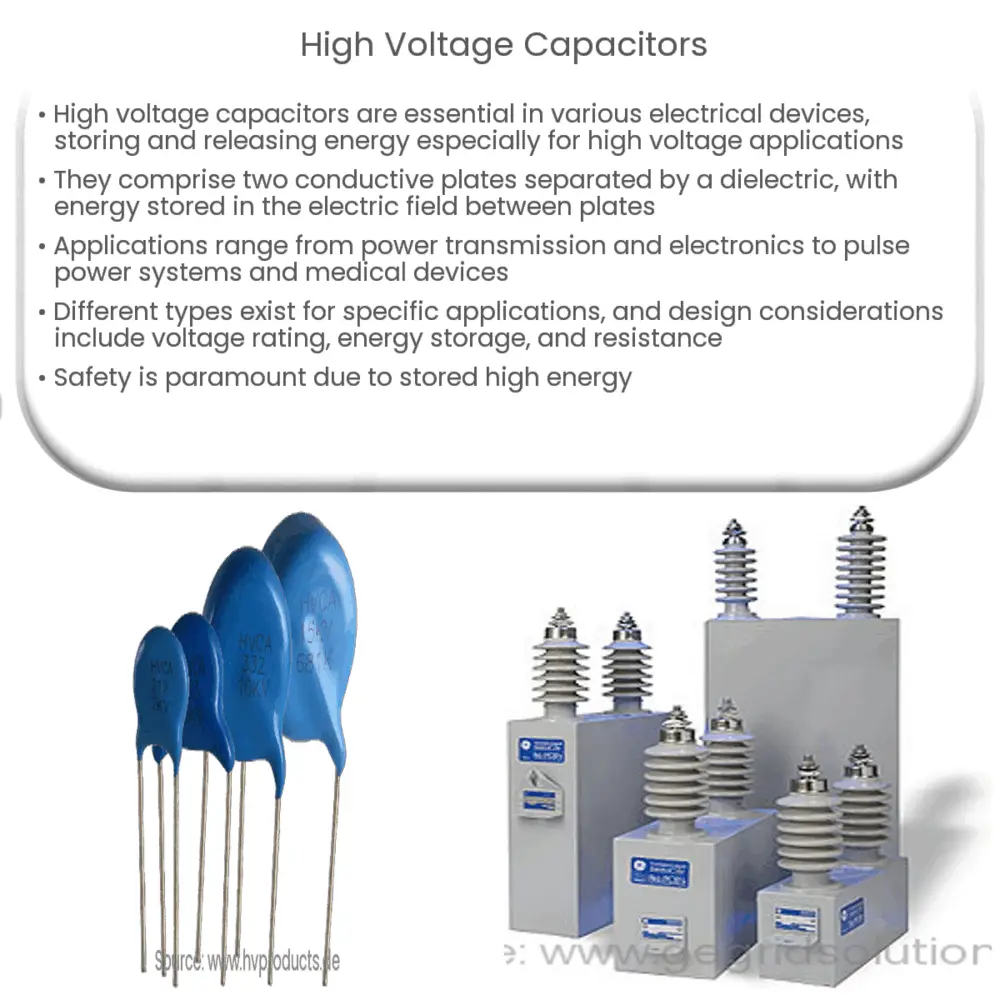Explore the functionality, applications, types, and safety considerations of high voltage capacitors in our comprehensive guide.

Understanding High Voltage Capacitors
High voltage capacitors, a critical component in many electrical and electronic devices, form the heart of the topic under discussion. These devices store and release electrical energy, especially in high voltage applications.
Construction and Functionality
At the most fundamental level, a high voltage capacitor consists of two conductive plates separated by an insulating material, known as a dielectric. The construction may vary, with differences in materials used and configuration, based on the intended application. However, the principle of operation remains the same: storing energy in an electric field between the plates.
Applications
- Power Transmission: In power systems, these capacitors help to stabilize voltage and power flow. They are essential for efficient and reliable power transmission.
- Electronics: Within electronics, high voltage capacitors are often used in power supply units and various circuits where high voltage is necessary. This could include devices such as televisions, radios, and amplifiers.
- Pulse Power Systems: High voltage capacitors have a pivotal role in pulse power systems. These systems often require a rapid release of energy, which is something capacitors excel at.
- Medical Devices: Certain medical devices, like defibrillators, utilize these capacitors. The stored electrical energy can be quickly released to provide a lifesaving shock.
Types of High Voltage Capacitors
While the core concept remains the same, there are different types of high voltage capacitors, each with unique characteristics making them suitable for specific applications. Here are a few:
- Ceramic Capacitors: These capacitors are small in size and have a high voltage rating. They are ideal for applications where size is a constraint.
- Film Capacitors: Film capacitors are known for their superior performance and longevity. They are used in many high voltage applications.
- Electrolytic Capacitors: While not typically designed for high voltage, some varieties can handle elevated voltages. These capacitors are generally used in power supply circuits.
The selection of the appropriate type of high voltage capacitor depends on the specific requirements of the application, such as the needed capacitance, voltage rating, and environmental conditions.
Design Considerations
Designing with high voltage capacitors necessitates attention to several factors. Chief among these are the capacitor’s voltage rating, its energy storage capacity (expressed in farads), its equivalent series resistance (ESR), and its self-resonant frequency (SRF). Each of these parameters can profoundly impact the performance of a circuit or system incorporating a high voltage capacitor.
Choosing the Right Capacitor
When selecting a high voltage capacitor for a specific application, it’s crucial to ensure that the component can handle the intended voltage levels. Overspecifying can lead to increased costs, while underspecifying may cause premature failure. Also, factors such as operating temperature, life expectancy, and physical size need to be considered.
Maintenance of High Voltage Capacitors
Maintenance of these components is critical to ensure optimal performance. Over time, capacitors can degrade and even fail due to a variety of reasons, including overvoltage, overheating, or natural aging. Regular inspections can help identify issues before they escalate into major problems, thus prolonging the device’s lifespan and improving system reliability.
High Voltage Capacitors in Innovations
High voltage capacitors continue to evolve, spurred by technological advancements and changing needs across industries. Innovations are emerging in areas such as materials science, aiming to develop capacitors that can withstand even higher voltages, operate at extreme temperatures, or deliver greater energy densities.
Safety Considerations
Working with high voltage capacitors brings an inherent risk due to the high energy stored within them. Even when disconnected from a power source, these capacitors can maintain a dangerous charge. Therefore, appropriate safety measures and discharge procedures should always be followed when handling and working with these devices.
Conclusion
In conclusion, high voltage capacitors serve a crucial role in a vast array of applications across numerous industries. From power transmission to electronic devices and medical equipment, their contribution is pivotal to modern technology. Understanding their working principles, types, and application-specific requirements is key to effectively leveraging their capabilities. As technology continues to evolve, so too will the innovation and implementation of these vital components. Despite their inherent risks, with the right knowledge and safety practices, they are invaluable tools in the world of electronics and beyond.

